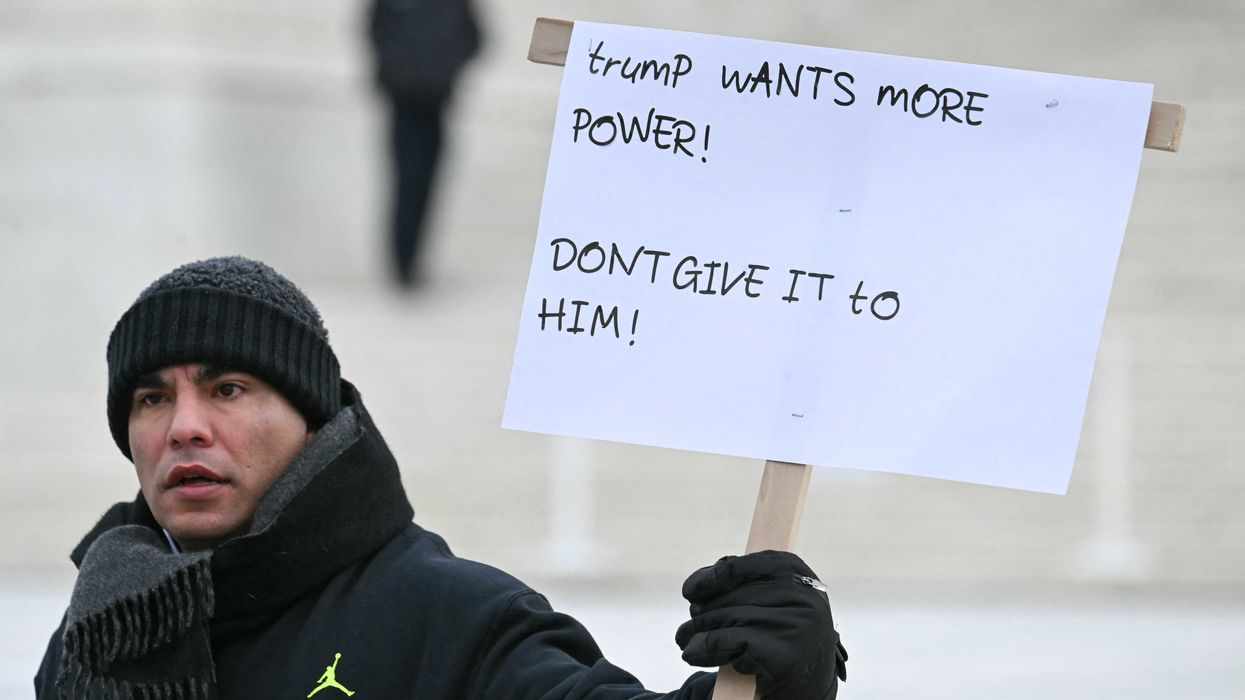GLENN: It's Halloween. And every Halloween, we spend some time with Edgar Allan Poe for just a few minutes. So people can remember what the spoken word and who real literature is really all about. Edgar Allan Poe is one of the greatest writers of American history. And was fascinating in and of himself. But all of his stories seem to revolve around the same kind of thing. A lost love and a man trying to deal with it. Eventually, spirals into madness.
This particular story that he wrote is a favorite of mine. And it is a story of a man sitting at home, alone, in his library, trying to read -- trying to take his mind off of his lost love. It's called The Raven.
Once upon a midnight dreary, while I pondered, weak and weary,
Over many a quaint and curious volume of forgotten lore
While I nodded, nearly napping, suddenly there came a tapping
As of some one gently rapping, rapping at my chamber door.
Tis some visitor," I muttered, "tapping at my chamber door —
Only this, and nothing more."
Ah, distinctly I remember it was in the bleak December
And each separate dying ember wrought its ghost upon the floor.
Eagerly I wished the morrow; — vainly I had sought to borrow
From my books surcease of sorrow — sorrow for the lost Lenore —
For the rare and radiant maiden whom the angels name Lenore —
Nameless here for evermore.
And the silken sad uncertain rustling of each purple curtain
Thrilled me — filled me with fantastic terrors never felt before;
So that now, to still the beating of my heart, I stood repeating
Tis some visitor entreating entrance at my chamber door —
Some late visitor entreating entrance at my chamber door; —
This it is, and nothing more."
Presently my soul grew stronger; hesitating then no longer
Sir," said I, "or Madam, truly your forgiveness I implore;
But the fact is I was napping, and so gently you came rapping
And so faintly you came tapping, tapping at my chamber door
That I scarce was sure I heard you"— here I opened wide the door; —
Darkness there, and nothing more.
Deep into that darkness peering, long I stood there wondering, fearing
Doubting, dreaming dreams no mortals ever dared to dream before;
But the silence was unbroken, and the stillness gave no token
And the only word there spoken was the whispered word, "Lenore?"
This I whispered, and an echo murmured back the word, "Lenore!" —
Merely this, and nothing more.
Back into the chamber turning, all my soul within me burning
Soon again I heard a tapping somewhat louder than before.
Surely," said I, "surely that is something at my window lattice:
Let me see, then, what thereat is, and this mystery explore —
Let my heart be still a moment and this mystery explore; —
'Tis the wind and nothing more."
Open here I flung the shutter, when, with many a flirt and flutter
In there stepped a stately raven of the saintly days of yore;
Not the least obeisance made he; not a minute stopped or stayed he;
But, with mien of lord or lady, perched above my chamber door —
Perched upon a bust of Pallas just above my chamber door —
Perched, and sat, and nothing more.
Then this ebony bird beguiling my sad fancy into smiling
By the grave and stern decorum of the countenance it wore.
Though thy crest be shorn and shaven, thou," I said, "art sure no craven
Ghastly grim and ancient raven wandering from the Nightly shore —
Tell me what thy lordly name is on the Night's Plutonian shore!"
Quoth the Raven, "Nevermore."
Much I marveled this ungainly fowl to hear discourse so plainly
Though its answer little meaning— little relevancy bore;
For we cannot help agreeing that no living human being
Ever yet was blest with seeing bird above his chamber door —
Bird or beast upon the sculptured bust above his chamber door
With such name as "Nevermore.”
(music)
GLENN: I love Edgar Allan Poe. Just love him.
STU: Go to @GlennBeck or @worldofStu. We'll tweet out a link to where you can get that for today. It's a great thing to play when trick-or-treaters are coming to the house. Because it's not only scary because it's Poe. But it's also Glenn Beck. So you get both two scary sources at the time.
GLENN: If you -- when we tweet out where you can get it, I'm not sure if you can get it on iTunes.
STU: I think you can.
GLENN: Yeah. But it's The Raven. It's the Tell-Tale Heart. It's the Conqueror Worm. Annabel Lee.
STU: Annabel Lee.
GLENN: It's just the best of Edgar Allan Poe.

 JIM WATSON / Contributor | Getty Images
JIM WATSON / Contributor | Getty Images
 Joe Raedle / Staff | Getty Images
Joe Raedle / Staff | Getty Images AASHISH KIPHAYET / Contributor | Getty Images
AASHISH KIPHAYET / Contributor | Getty Images Harold M. Lambert / Contributor | Getty Images
Harold M. Lambert / Contributor | Getty Images